- Home
- Patricia Cornwell
Dust Page 11
Dust Read online
Page 11
“A small right-sided pneumothorax,” she explains right off when she answers my call. “Her scan shows air trapped in the pleural space of the upper lobe, suggesting some type of trauma.”
“I didn’t notice anything here at the scene, no injury to her chest,” I reply. “But it wasn’t the best conditions at the time. Basically, I had a flashlight.”
“Something caused her lung to collapse.”
“Do we have an idea what?”
“I can’t examine her externally unless you want me to unwrap her, Dr. Scarpetta.”
“Not until I get there.” I watch Marino and Machado work on their awkward evidence collection of a fence post. “What about soft tissue damage? Do you see any internal hemorrhage?”
“There’s very minimal bleeding into the upper-right chest,” she tells me as I slowly walk around the parking lot, restless and with too much to think about. “Slightly above and to the left of her breast.”
“You’re not seeing any rib fractures,” I assume.
“No fractures period. I don’t guess we have her clothes.”
“We have one shoe that might be hers. Nothing else so far.”
“That’s too bad. Really too bad. I sure wish we had her clothes.”
“You and me both. Any other radiologic abnormalities?” I can judge the lifting of the overcast by the brightening of the white tennis bubble several playing fields away.
The temperature is in the low fifties, on its way to almost warm.
“There are dense areas of some material inside her nose and mouth,” Anne replies.
“What about in her sinuses, her airway, her lungs? Was any of this material aspirated?”
“It doesn’t appear that it was.”
“Well, that’s significant. If she were smothered with something that has this fluorescing residue on it, I would expect that she aspirated some of it.” The findings are perplexing and seem contradictory.
“Whatever it is, it has a Hounsfield on average of three hundred – or the typical radiodensity of small kidney stones, for example,” Anne says. “I’ve got no idea what it could be.”
“I found high concentrations around her nose and mouth and also in her eyes.” I watch Marino retrieve a pair of heavy-duty wire cutters from his toolbox. “But if she didn’t aspirate any of it, that’s perplexing. It continues to make me wonder if this material was transferred postmortem.”
“I think that’s possible. I can see it inside her nose and mouth. But not very far inside so it may have gotten there after she was no longer breathing. There’s also a fair amount of it between her lips and teeth, what looks like clots of it,” Anne says. “It shows up very clearly on CT.”
“Clots?”
“I don’t know how else to describe it. There are irregular shapes that are denser than blood but not nearly as dense as bone.”
“I didn’t notice any of these clots, as you put it. There was nothing like that externally. The residue that fluoresces is a very fine material like dust that I doubt you can see without magnification. Possibly it’s a trace of the denser material inside her nose and mouth.”
“Like if she was held facedown in something,” Anne suggests.
“There are no abrasions or contusions on her face or neck. Usually when someone has been held facedown in dirt, mud, shallow water, there’s significant injury to the lips, the nose, the cheeks. And there’s aspiration as the person struggles to breathe. Typically, we find the dirt, water inside the sinuses, in the airway, sometimes in the stomach and lungs.”
“All I can tell you with certainty based on what I’m seeing on her scan, Dr. Scarpetta, is her collapsed lung isn’t what killed her.”
“Of course,” I agree. “But if her breathing was already compromised, then she was going to be more vulnerable to asphyxia.”
My suspicions are getting stronger that the fluorescent material all over Gail Shipton was deposited after she was dead. Why? And where was she? And is the residue an accidental transfer of evidence or did her killer want it found? The glittery substance isn’t indigenous to the muddy playing field. It came from someplace else.
“For sure a collapsed lung in isolation didn’t kill her,” I continue to explain. “Right now I don’t know what did but her death isn’t due to natural causes. I’m working this as a homicide and provisionally that’s what I’m calling it, a possible suffocation with contributing complications. I’d appreciate it if you’d pass that along to Bryce to keep him updated but please remind him we’re not releasing anything to the media yet. We need to positively ID her first.”
“That reminds me, Lucy says her dentist is Barney Moore, whom we’ve dealt with once before. That floater from last summer, he told me. As if there was only one.”
“Gail Shipton’s dentist?” I puzzle.
“Right. He’s sending her charts. We should have them any minute.”
“That’s probably the quickest way to confirm her ID,” I agree as I wonder why Lucy would know a detail as personal as who Gail Shipton’s dentist is. “Can you get Bryce to line up Dr. Adams ASAP?”
Ned Adams is a local dentist on call for us, a certified odontologist, an eccentric obsessed with the minutiae of teeth. There’s nothing he likes better than a mouth that can’t talk back, he quips every time I see him.
I search for Benton as Anne and I talk. He’s still inside Simmons Hall, some of its residents emerging, slinging backpacks, grabbing bicycles or walking.
They seem oblivious or only mildly curious now that the body is gone. There is nothing left but two plainclothes cops doing battle with a fence post, a German shepherd puppy barking on and off inside a car, and a woman forensic pathologist on her phone in a parking lot.
“Do you want me to leave her in the scanner until you get here?” Anne asks me.
“No. Let’s move her to my table because I’m going to need to prep her for angiography,” I explain. “I want to see if we can figure out what might have caused her collapsed lung and also check the vessels of her heart since it’s obvious she had a significant rise in her blood pressure that resulted in florid minute hemorrhages. Let’s get the test contrast agent ready. Four hundred and eighty MLs of embalming fluid.”
“Plasmol twenty-five arterial? Hand injection or the machine?”
“By hand. The standard five-F angiocatheters and an embalming trocar, plus the usual thirty MLs of Optiray three-twenty.”
“You’ll be here when?”
“Within the hour, hopefully.” I watch Marino cut through chain link, the metal snapping and jingling. “If they don’t finish up here soon, Benton and I will leave without them. We’ll walk back to the office. I think the two of them might be at it for a while,” I decide as an area of fencing spills loudly to the ground in a metal waterfall. “You’d think they were archaeologists approaching King Tut’s tomb the way they’re deliberating.”
The gouged fence post has proven more stubborn than supposed, set in concrete and buried deep. For the past hour I’ve listened to Marino and Machado debate hacksawing off the area of galvanized steel tubing in question as opposed to uprooting the entire tall pole, and maybe taking the gate with its scratched fork latch while they’re at it. Several times during all this, Marino has let Quincy out for walks involving mini–training sessions that are comical or pathetic, depending on one’s point of view.
These exercises have been going on for weeks, ever since he decided Quincy would be a working dog. Marino hides a bit of cloth saturated with human decomposition fluids that he no doubt got from a CFC refrigerator at some point, and Quincy sniffs out this foul-smelling rag and urinates or rolls on it, a behavior not appropriate for a cadaver dog. Three times this morning I’ve witnessed him darting about, snuffling, digging, rolling, and peeing, while Marino the handler rewards him by blowing a whistle.
I’ve observed the absurd carnival of Marino tilting at a fence post and hiding bits of putrid cloth but mostly I’ve watched Benton wander and prowl. It’s rare we’
re at a scene together and I’m moved and amazed in a deeply unsettled way. He seems guided by what the rest of us can’t see as if he’s his own divining rod, walking purposefully here and there with his suit pants tucked inside a pair of orange rubber boots several sizes too big. First he slogged out to the body before it was wrapped up like statuary and carried away on the spine board. Speaking to no one, not even to me, Benton slowly circled the dead woman like a big cat sizing up a kill.
He didn’t offer opinions about the glittery residue or what it might be. He made no comment and asked no questions as he listened silently, inscrutably, to what I said about her postmortem artifacts, about her time of death, which I project was within three hours of her disappearance at most, possibly around eight or nine o’clock last night. He barely looked at the curious crowd assembling in front of Simmons Hall, dazed young students in every state of dress on the other side of the fence. It was as if he’d already made up his mind about them, as if he already knows the devil in the dance with him.
I watched in a mixture of amazement and unsettledness, mesmerized by Benton’s dark theater, his behavior as ritualized as the evil people he pursues. He stalked after the body as it was carried across the field, through the open gate, and loaded into the back of the van, which he followed on rubber-booted feet to Memorial Drive. From there he retraced his steps, reentering the campus alone in the gray day’s first light, along the alley, back to the empty parking lot, where he stood perfectly still for a while, taking in the vista from the perspective of the “subject,” as he calls those he hunts.
14
I watch Benton now, emerging from Simmons Hall. He strides toward us again.
He doesn’t speak to Marino or Machado. He says nothing to me but sets out through the gate again, across the grass and mud again. He heads to where the body had been as if he’s learned or intuited information that has caused him to return yet again to the spot where someone left the dead body of a brilliant young woman whose fatal error may be as random as stepping outside a bar after dark to hear her phone better. Except Benton doesn’t think such a thing. That’s not what his inner voice is telling him. I recognize that much about his behavior, which at the moment is reminiscent of a heat-seeking missile.
I’m vividly reminded of what guides him, a necessary but dangerous programming that comes from tasting the forbidden fruit of original sin. The abuse of power, Benton says. It all comes back to that. We want to be like God. If we can’t create, we’ll destroy, and once we’ve done it, once is not enough. That’s the way it goes, simple and predictable, he believes. He has to understand the cravings without giving in to them. He has to make part of him what he will never allow to overtake him, and while I’ve known this about Benton from the beginning of our time together, when I’m face-to-face with it I’m ambivalent about what I see. I worry about poison eroding the vessel it’s in.
Benton positions himself exactly where the yellow tarp was anchored by evidence flags. He crouches in the red mud and looks around, his forearms resting on his thighs. Then he gets up. He moves a short distance away, where he notices something at the edge of the infield, and he bends down. He crouches and looks. He pulls on a pair of black nitrile gloves.
He touches whatever he’s found and lifts a gloved finger to his nose. Standing up, he looks across the field and meets my eyes. He nods to summon me and I know by his refusal to look at Marino and Machado that he expects me to come alone.
I carry my big case back out into the field, setting it down when I reach Benton. He shows me what looks like petroleum jelly, an irregular translucent glob about the size of a penny.
It shimmers on blades of coarse brown grass at the edge of the red mud, and he shows me a slick of what I presume is the same substance on his glove. He holds it close so I can smell the strong, penetrating odor of menthol.
“Vicks,” he says.
“Or something like it.” I open my black plastic case.
“It’s not water-soluble, which is why it survived the wet conditions.” He scans the soggy playing field. “Even so, a downpour would have pushed it deeper into the grass. We probably wouldn’t have found it.”
I get out a photographic scale and my camera. “You’re concluding it was deposited here after the rain stopped.”
“Or when it had let up considerably. What was it doing around two or three a.m.?”
“Pouring, at least at our house.” I have no idea what he’s getting at.
“Do any of the cops put Vicks up their nose?” Benton watches me take photographs. “Are any of them still into that numbskull trick?” He glances in the direction of Marino and Machado.
The body isn’t decomposing. There was no stench at all, I remind him, and I would have smelled Vicks or some other mentholated ointment. I would detect it a mile away, I add. Certainly Marino didn’t swipe Vicks up his nose. He knows better by now. I corrected him of that bad habit after the first time I saw him do it in the morgue. Now you’ve just trapped all those molecules of putrefaction inside your nose like flies on flypaper, I remember saying to him, and then he didn’t do it anymore.
“I was with Marino from the moment he first got here,” I explain to Benton. “I’ve been in close range of him the entire time and I haven’t seen him carrying Vicks around in twenty years.” I pull on fresh gloves. “And Machado wouldn’t. There’s no way he would. With rare exception, this generation of cops knows better than to do things like that. They’re trained that odors give us information and using any substance at a crime scene, whether it’s petroleum jelly or smoking a cigarette, can introduce contamination.”
“And there was nothing like this on the body.” Benton wants to make sure.
“I noticed a faint scent of perfume and that’s it. I certainly would have smelled Vicks.”
“He didn’t use it on her,” Benton decides as if it might be reasonable to wonder if a killer smeared vapor rub on his victim.
“I didn’t smell menthol and I would have. It’s an overpowering odor pretty hard to miss.”
“Then how the hell did it get here?” He asks a question that sounds ominously rhetorical.
“The police have been on the scene since around four a.m.,” I remind him. “If somebody suspicious was out here in this spot, he would have been very close to the body and certainly would have been seen.”
“What was it doing around that time? The weather?” Benton stares off, deep in thought.
I call Marino. I watch him answer his phone and turn in my direction as I ask him what time it was when the police responded to the scene this morning. He talks to Machado and then gets back to me.
“It was close to four,” he says. “Maybe ten of four when the first cruiser rolled up.”
“How hard was it raining out here in this exact location? I know it was heavy on the other side of Cambridge about the time you came to the house. It was pouring when I took Sock out,” I recall, and he turns to Machado again.
“It was raining on and off, not too bad here on this side of town,” Marino lets me know. “Just the conditions were bad by then. You see how much mud there is.”
I thank him and end the call. I relay to Benton what I was told.
“It probably was left not long before the police got here, could be minutes before they got here,” he deduces, “by which time the rain was light and not a factor.”
“What about the couple, the two students who found the body and called the police?” I point out. “Wouldn’t they have noticed someone hanging around?”
“That’s a good question. But if they did, they wouldn’t have had cause for concern.”
Benton is implying that he knows this killer and it’s someone who blends in or can make himself disappear. He’s suggesting that this person left a mentholated ointment in the grass close to where the body was discovered.
“You’re thinking it was left on purpose?” I return the camera and scale to my field case.
“I’m not sure,” he says.
/> “This person digs into a jar of a mentholated ointment or squeezes it from a tube and some of it falls off his finger? Or he wipes excess in the grass?” I’m aware of an undercurrent of uneasiness and doubt.
“I don’t know. What’s important is it may have been left by him because using it is part of his MO.”
“You’re considering this because of what you’ve observed in this one case, at this one scene?” I ask because it’s not possible to reach such a conclusion based on so little data. “Or is it because of the other ones?”
“I haven’t seen this in the other ones. But he may have left it this time without knowing he did. I believe he’s losing control.” He repeats what he has said several times now. “Something rather catastrophic is going on with him,” he says as if he knows who and what this killer is, and my misgivings grow.
I fear Benton has gotten too close to the killer and I’ve feared this before. I hope there’s not a legitimate reason his colleagues at the BAU aren’t listening to him.
“He could have gotten the idea about a mentholated vapor rub. It’s not new under the sun,” Benton says.
I bag and label his smeared glove. Separately, I collect the menthol gel and the blades of grass it adheres to as he mentions that horse trainers smear Vicks under the nostrils of their racehorses to keep them focused.
“It’s used on stallions, mainly,” he explains in the same reasonable tone.
He may as well be talking about a movie we just saw or what we should have for dinner. The abnormal has to be normal to him or he’ll never figure it out. He can’t be repelled and repulsed by the demons or they won’t talk. He has to accept them to conjure them up, and witnessing the mode he goes into bothers me again. It bothers me more than it ever has before.
“The odor distracts them from distractions,” he explains. “All they can focus on is running because they can’t smell anything but menthol.”

 Blow Fly
Blow Fly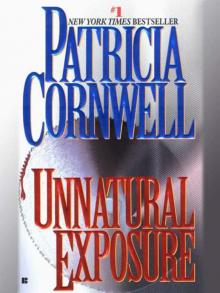 Unnatural Exposure
Unnatural Exposure The Bone Bed
The Bone Bed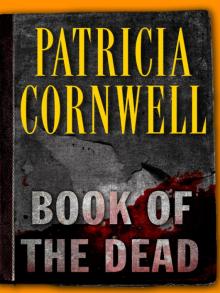 Book of the Dead
Book of the Dead Flesh and Blood: A Scarpetta Novel (Scarpetta Novels Book 22)
Flesh and Blood: A Scarpetta Novel (Scarpetta Novels Book 22) Red Mist
Red Mist Cruel & Unusual
Cruel & Unusual Hornet's Nest
Hornet's Nest Four Scarpetta Novels
Four Scarpetta Novels Scarpetta's Winter Table
Scarpetta's Winter Table Isle of Dogs
Isle of Dogs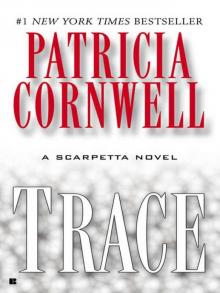 Trace
Trace Postmortem
Postmortem Body of Evidence ks-2
Body of Evidence ks-2 Southern Cross
Southern Cross All That Remains
All That Remains Point of Origin
Point of Origin Depraved Heart
Depraved Heart Ruth, a Portrait: The Story of Ruth Bell Graham
Ruth, a Portrait: The Story of Ruth Bell Graham From Potter's Field
From Potter's Field Flesh and Blood
Flesh and Blood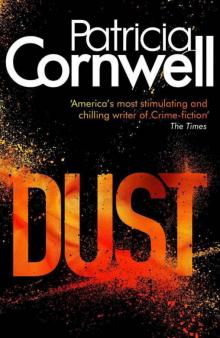 Dust
Dust The Body Farm
The Body Farm Port Mortuary
Port Mortuary Quantum
Quantum Portrait of a Killer: Jack the Ripper - Case Closed
Portrait of a Killer: Jack the Ripper - Case Closed Spin (Captain Chase)
Spin (Captain Chase) Cause of Death
Cause of Death The Scarpetta Factor
The Scarpetta Factor Predator
Predator Scarpetta 18 - Port Mortuary
Scarpetta 18 - Port Mortuary Trace ks-13
Trace ks-13 Portrait of a Killer
Portrait of a Killer Cruel and Unusual ks-4
Cruel and Unusual ks-4 Cause Of Death ks-7
Cause Of Death ks-7 Dust ks-21
Dust ks-21 At Risk wg-1
At Risk wg-1 The Last Precinct ks-11
The Last Precinct ks-11 Book of the Dead ks-15
Book of the Dead ks-15 All That Remains ks-3
All That Remains ks-3 Ruth, a Portrait
Ruth, a Portrait Scarpetta's Winter Table (kay scarpetta)
Scarpetta's Winter Table (kay scarpetta) From Potter's Field ks-6
From Potter's Field ks-6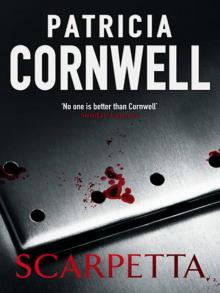 Scarpetta
Scarpetta Isle of Dogs jhabavw-3
Isle of Dogs jhabavw-3 Hornet's Nest jhabavw-1
Hornet's Nest jhabavw-1 The Body Farm ks-5
The Body Farm ks-5 Blow Fly ks-12
Blow Fly ks-12 Post Mortem
Post Mortem Five Scarpetta Novels
Five Scarpetta Novels Chasing the Ripper (Kindle Single)
Chasing the Ripper (Kindle Single) Point of Origin ks-9
Point of Origin ks-9 Port Mortuary (2010)
Port Mortuary (2010) Unnatural Exposure ks-8
Unnatural Exposure ks-8 Southern Cross uhabavw-2
Southern Cross uhabavw-2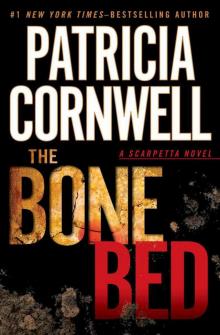 The Bone Bed ks-20
The Bone Bed ks-20 Red Mist ks-19
Red Mist ks-19 Port Mortuary (2010) ks-18
Port Mortuary (2010) ks-18 Predator ks-14
Predator ks-14